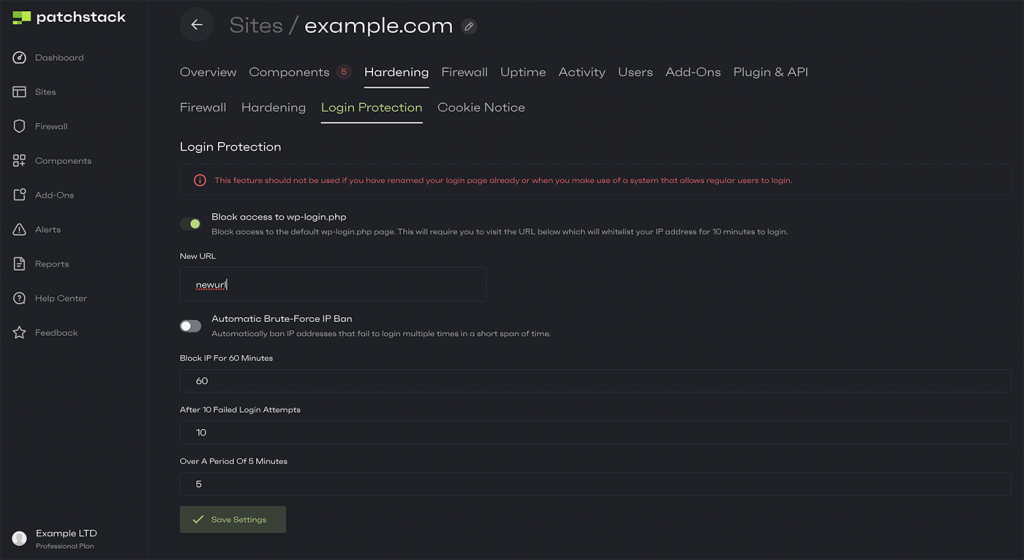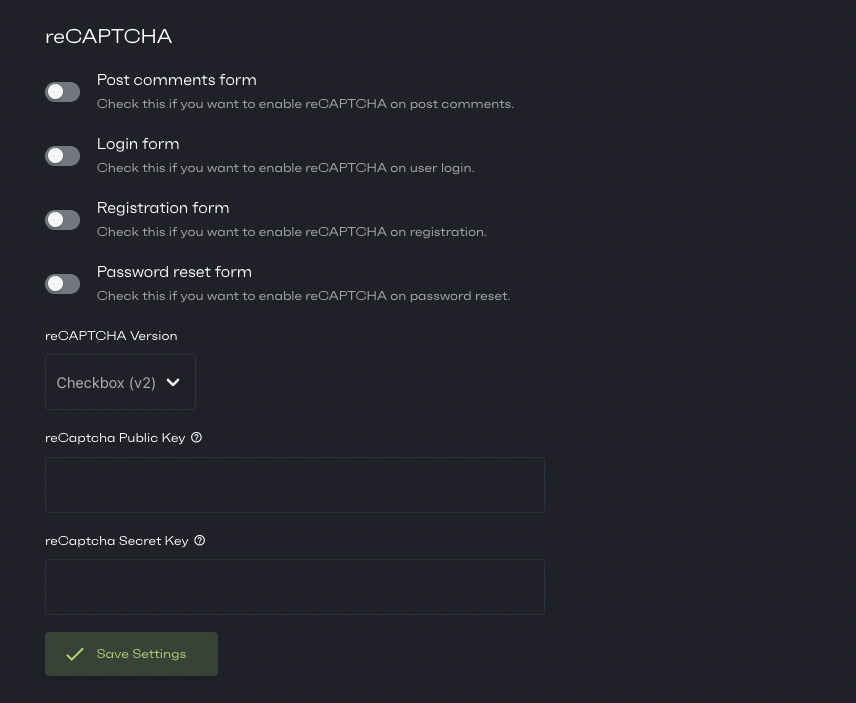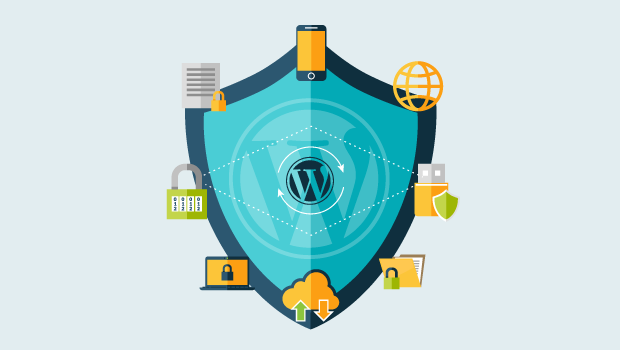
10 WordPress Essential Tips for Beginners
يناير 7, 2024
15 Common SEO Mistakes to Avoid
يناير 7, 2024The Ultimate Guide to WordPress Security
This is a complete guide for WordPress security that helps you learn why you need to secure your WordPress site, why and how WordPress sites get hacked, and how you can easily improve your WordPress security.
Investing time and money into securing your assets are both true in the real world and as well as in the digital. Patchstack is a security company, and speaking from experience, we have seen many WordPress websites hacked, and taken over, and their private information was stolen because they overlooked a single vulnerability within their website.
That’s all it takes; if you have one loophole in your website and if it is discovered and taken advantage of, you will risk losing your digital presence.
WordPress security is a vast topic as there are many techniques you can use on your website and hosting server to secure against malicious attacks. In this guide, we will aim to cover every method there is to secure a WordPress website.
Before we begin, we should mention that it is not necessary to implement all the techniques talked about in this article.
Why do you need to secure a WordPress website?
This is a question or a thought that can pop into your or your client’s mind. Many design and development agencies offer security as a service to their clients, and new clients who are just starting out building their online presence won’t be interested in securing their WordPress websites.
It is essential for both the agencies and clients to understand that without a proper security policy, they risk losing their time and investment, their data, their domain, and much more.
With so many malicious bots scanning continuously for vulnerabilities in WordPress websites, it is necessary to invest in website security.
What are some common WordPress security issues?
As mentioned above, hackers have built bots and scanners that can find and automatically try to hack into your WordPress websites. There are many types of attacks that bots carry out; one of the most notorious ones is brute force attacks on the login page, where bots keep on entering combinations of usernames and passwords on your website’s login page in hopes of cracking the combination.
Once the bot gains access, it will notify its hacker, and he will gain access to your WordPress dashboard to carry out further attacks. Choosing strong, unique passwords will stop these brute-force bots from succeeding. Better yet, consider 2FA.
Another attack on WordPress websites is a DDoS attack, where a set of compromised servers or websites try to send requests to a WordPress website to waste the victim website’s server resources and eventually render the website unreachable. The best solution to this kind of attack is blocking the attacking IPs on a network level.
However, the most common attack is gaining access to a WordPress website by exploiting a vulnerability in a theme or plugin. At Patchstack, we see most compromised websites had a vulnerable plugin that wasn’t updated as soon as a patch was available.
Why do WordPress sites get hacked?
WordPress is used on millions of websites, so it is no surprise that many hackers invest their time finding vulnerabilities to access WordPress websites. WordPress also has a large open-source community that builds plugins, themes, and other scripts to extend WordPress’ functionality.
Since there are thousands of plugins and themes built by third-party developers, there are bound to be vulnerabilities within the code that hackers can use to hack WordPress websites.
Luckily to combat hackers, an active community of security researchers invests their time in finding security loopholes within the WordPress core and plugins and themes before they are exploited.
Will my site be protected from vulnerabilities?
With so many attacks that can be carried out against WordPress websites, we get asked this question: “Is there a guarantee that my website will be safe?” The answer is no, but you can take security precautions to block some common attacks, make it harder to access your website and secure your data by having backups that you can easily restore if your website gets hacked.
The role of the hosting provider in WordPress security
WordPress hosting is big business, and since we trust hosting providers with our digital assets, it only makes sense to know what level of security your WordPress hosting provider has.
There are many types of hosting services, but we aren’t going to cover them in this article as it is not the scope of this article; however, if you are using a hosting service that calls itself a specialist WordPress hosting provider or a “Managed WordPress Hosting” provider, then that should be a good indication that your hosting service provides support, speed, and security intended for WordPress websites.
A WordPress hosting service should provide some level of security, and that is:
- Timely server software updates
- Malware scanning.
- Automated backups.
- DDoS attack mitigation or easy integration with third-party services.
- Secure connections, SSL certificates, and SSH/SFTP access.
- Using secure hosting networks/servers.
- Uptime monitors with logs of incoming traffic.
- Real-time support.
Essential WordPress security practices
Before diving deeper into techniques to block certain types of attacks, we will first cover some of the basics or essentials of WordPress security. These methods shouldn’t be overlooked and should be taken care of by your team, client, or hosting provider.
1. Keeping WordPress updated
The first method is always to have an up-to-date version of all WordPress-related software, this includes WordPress core, themes, plugins, and any other third-party code or scripts that you may be using.
If you are using an older version of WordPress that is no longer supported, you are leaving many backdoors open for attackers to take over the website. A similar statement is true for plugins and themes. Some websites use a lot of plugins and still have older theme files on their WordPress websites. It is best to remove unwanted plugins and themes and the ones that are deactivated.
If you have multiple WordPress websites, updating and testing everything on every website will take a lot of your time. That is why it is a best practice to use a service that automates checking outdated plugins, themes, and WordPress core and gives you a single dashboard from which you can update all your websites easily.
Our WordPress security app, Patchstack, provides a central dashboard from where you have complete control over multiple WordPress websites. Patchstack automatically scans and notifies you immediately if an outdated software version runs on your WordPress website. You can also turn on the auto-update feature in Patchstack to apply any new updates to the WordPress core, themes, and plugins.
Now you know 10% of The Ultimate Guide to WordPress Security !
2. Use complex passwords and usernames
Using most common usernames, such as “admin,” and passwords, such as “drowssap,” will make it easier for brute force attacks to be successful. To make it more challenging, using a complex combination of passwords and usernames for each user on your WordPress website is wise.
If you run an e-commerce or any membership website, forcing users to use unique usernames and complex passwords is especially important.
Now you know 20% of The Ultimate Guide to WordPress Security !
3. Use secure WordPress hosting with updated software
We mentioned earlier in the article that WordPress hosting does offer some level of security for your WordPress websites and hosting servers. One essential security feature that a hosting provider should have is the ability to easily create, schedule, or automate backups and restore your website’s older versions if your website is compromised.
Some noteworthy WordPress hosting providers that provide good security along with optimized servers are:
- WP Engine
- Pagely
- Plesk
- One.com
- Hostinger
- A2Hosting
- Convesio
- Gridpane
Note: The above list is not exhaustive, and we recommend that you research when it comes to choosing a hosting provider that will fulfill your security needs.
Now you know 30% of The Ultimate Guide to WordPress Security !
4. Use an Uptime Monitor
Some hosting companies do provide a built-in uptime monitoring service, but it is still a good idea to install your uptime monitoring service on your website. Some agencies use uptime monitors for early warnings when the website goes unresponsive.
If your website is offline, that doesn’t mean that your website is hacked or under attack. It could be that your hosting server is experiencing an outage. But in any event, it is a good idea to be warned as soon as your website goes down so that you can investigate the cause and take necessary action.
Uptime Robot & Better Uptime are two examples of tools you can use to monitor the uptime of your WordPress Website.
Now you know 40% of The Ultimate Guide to WordPress Security !
5. Change the default WP-login URL
Automated bots try to gain access to WordPress websites by conducting brute-force attacks on the /wp-admin or /wp-login.php URLs. Keeping the default login URLs makes your website open to such bots and attacks. Disabling the default login URL and using a custom URL for logging in to your WordPress dashboard is a good idea.
It is important to note that you shouldn’t simply redirect your default login URL to a custom URL, instead, you should restrict access to /wp-admin and /wp-login.php URLs.
Now you know 50% of The Ultimate Guide to WordPress Security !
WordPress security important considerations
Now that we have covered some WordPress security essentials, we will define some advanced security considerations that you should implement to make your WordPress websites secure and safe.
You can use a combination of security measures mentioned below and make it a part of your WordPress security policies.
6. Use a vulnerability monitoring service for early detection
Nothing beats early warning systems. Patchstack is one such service that continuously monitors your WordPress websites for vulnerabilities, and it syncs the WordPress core, theme, and plugin versions and notifies you if you have outdated or vulnerable software installed on your website.
Now you know 60% of The Ultimate Guide to WordPress Security !
7. Have a Solid Backup Solution
To be better prepared for any potential loss of a website and its data, it is highly recommended that you have a backup policy and that too that is multi-tiered. Meaning that you should have multiple backups created of your website on multiple sources. For example, have a backup of your website files and database on your hosting server and an offsite backup on a cloud server or storage service like (Dropbox, Amazon S3, or Google Drive).
You can ask your hosting provider about the backup solutions they provide, and you can set up your backup processes using plugins like WPVivid and UpdraftPlus.
Now you know 70% of The Ultimate Guide to WordPress Security !
8. Block brute force attacks and attacking IPs
These attacks have become a nuisance for WordPress websites, and the only way to get rid of them is to block attacking IP addresses. It is almost impossible to block them manually as Brute Force attacks come in from various IPs.
CrowdSec’s plugin is a good solution to combat such attacks, it comes with a behavior detection engine that logs the attacking IPs in a central database and combats the attacking IP addresses by blocking them or challenging them with a captcha.
Now you know 80% of The Ultimate Guide to WordPress Security !
9. Limit login attempts
Limiting attempts to log in also secures your WordPress website against automated brute-force attacks. There are many methods to secure the login page of your WordPress websites, but limiting login attempts is a sure way to deny access to automated bots.
You can set rules on your login page to block anyone who fails to log in after a certain number of attempts. For example, you can block an IP address if it fails to log in after three attempts. There are many plugins available on the WordPress.org plugin repository to help you limit login attempts. Patchstack also has this feature built-in and you can create your own rules.

Now you know 90% of The Ultimate Guide to WordPress Security !
10. Add Recaptcha on the login page
A free service by Google that blocks bots by presenting a Turing test on forms. reCaptcha can be implemented on the login page and contact forms to block automated spam inputs.
Since this is a service by Google, you can be protected against numerous IPs bots use. Adding reCaptcha does add friction to your login page and forms, but it also improves the security of your WordPress website. You can easily add reCaptcha to your WordPress websites through Patchstack.

Now you know 100% of The Ultimate Guide to WordPress Security !
Visit our website on: https://swatechnologies.online/
Visit our facebook page on: https://web.facebook.com/swatechnologies

